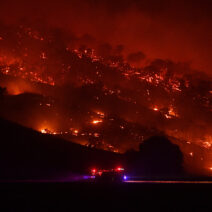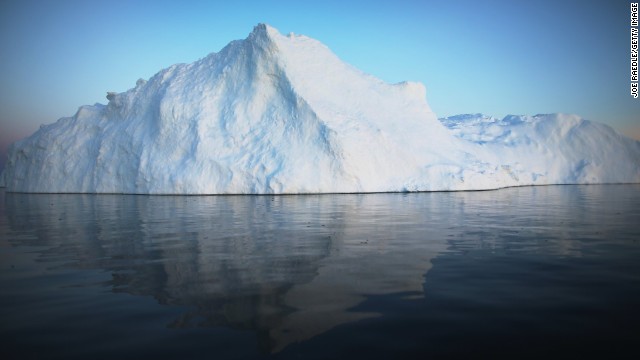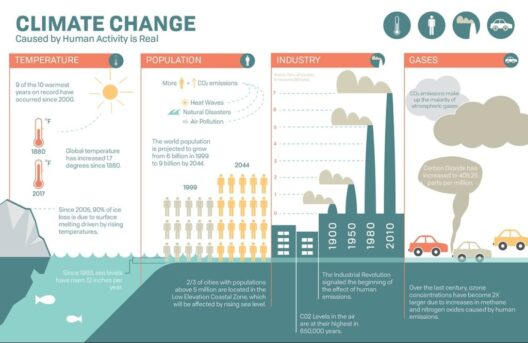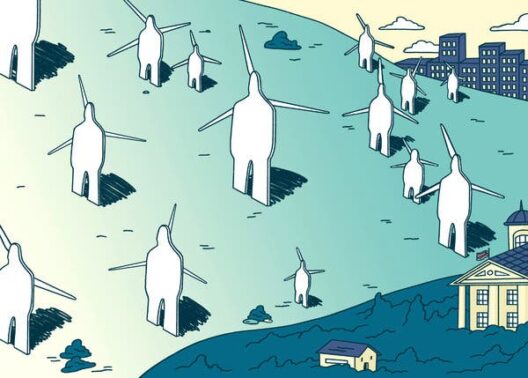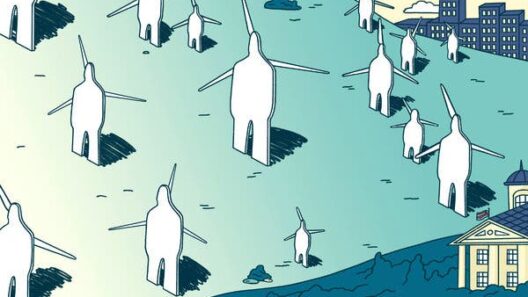Climate change is a multifaceted phenomenon that influences a myriad of ecological, social, and economic systems. One of the more intriguing questions that arises within the discourse of climate science is whether climate change could paradoxically lead humanity into another Ice Age. This notion, while seemingly fantastical, warrants a thorough examination of both the mechanisms of climate change and historical climatic patterns. By delving into this inquiry, we can elucidate the reasons behind our fascination with the potential cyclical nature of Earth’s climate and the implications for our future.
The Earth has experienced multiple Ice Ages over the past 2.4 billion years, characterized by significant reductions in global temperatures and expansive glaciation. These epochs were not merely the result of fluctuating solar radiation but were influenced by various factors, including tectonic activity, volcanic eruptions, and greenhouse gas concentrations. Understanding these elements provides a foundational backdrop for assessing whether contemporary climate change could herald a new frigid era.
One component driving the contemporary climate crisis is the pronounced increase in greenhouse gas emissions, primarily from fossil fuel combustion. This alarming trend has led to global warming—a phenomenon in which average global temperatures rise due to the accumulation of carbon dioxide, methane, and other gases in the atmosphere. Consequently, one might wonder: could this warming somehow lead to conditions that would instigate a cooling phase, potentially thrusting us into an Ice Age? The answer lies within the complex interplay of climate feedback mechanisms.
Feedback loops are pivotal in climate systems. As Earth’s temperature escalates, polar ice sheets and glaciers melt, which in turn diminishes the planet’s albedo—the ability to reflect solar radiation. This reduction in ice cover exposes darker ocean and land surfaces, which absorb more heat, exacerbating warming. However, the melting of ice caps is not solely a linear affair. It can disrupt oceanic currents, particularly the thermohaline circulation, a critical component of Earth’s climate regulation.
The thermohaline circulation, sometimes referred to as the “global conveyor belt,” controls the distribution of heat and nutrients around the globe. It is driven by differences in water temperature and salinity. The influx of freshwater from melting glaciers and icebergs can dilute saline waters, potentially weakening this circulation. A weakened or altered thermohaline circulation might initiate a radical cooling effect in certain regions, leading to conditions reminiscent of an Ice Age.
Historical precedents lend credence to this hypothesis. During the Younger Dryas period, approximately 12,900 to 11,700 years ago, the Earth experienced a sudden and dramatic cooling that is believed to have been triggered by the release of freshwater from glacial lakes into the North Atlantic Ocean. This influx disrupted the thermohaline circulation, leading to a significant climate shift. Similar mechanisms today act as cautionary tales, indicating that drastic alterations in oceanic currents could produce pronounced climatic consequences.
The concept of abrupt climate change also hinges upon the intricate interdependencies within Earth’s systems. Ecosystems are interconnected, and shifts in one component can catalyze a domino effect. The reduction of Arctic ice cover, for example, may further accelerate warming through decreased albedo, yet it might also disrupt weather patterns in distant regions, exacerbating droughts, storms, and other extreme weather phenomena. Consequently, while the immediate focus of climate change narratives often revolves around rising temperatures, the potential for sudden, severe cooling periods cannot be overlooked.
Moreover, human civilization is intricately woven into the fabric of these climatic systems. The ramifications of even a minor shift in temperature or precipitation patterns can reverberate through agricultural practices, freshwater availability, and biodiversity. The threat of climate-induced disasters, including floods and famines, underscore our vulnerability to the whims of a changing planet. Thus, the prospect of returning to an Ice Age would not only disrupt natural ecosystems but could also jeopardize food security and societal stability.
Fascination with the possibility of an Ice Age re-emerging is rooted in our desire to understand the past and predict the future. Humanity’s storied relationship with climatic changes has compelled societies to adapt and innovate. The abrupt transition from the last Ice Age into the current warm interglacial period serves as a testament to resilience. However, the contemporary speed of climate change presents an unprecedented challenge. The potential for another Ice Age raises a paradox: could our interventions designed to combat warming inadvertently set the stage for new glacial advances?
In addressing this conundrum, it is prudent for humanity to adopt an integrative approach to climate science. Multidisciplinary exploration—melding climatology, ecology, sociology, and policy—holds the key to deciphering the complexities of Earth’s systems. Mitigation and adaptation strategies must be informed by rigorous scientific understanding and incorporate diverse perspectives. This holistic view would enable societies to prepare for a spectrum of climatic outcomes, from continued warming to the more enigmatic emergence of a new Ice Age.
In conclusion, while the assertion that climate change could send us back into an Ice Age may seem paradoxical, it encapsulates the nuanced relationship between human activity and natural systems. Historical patterns provide insights, and the delicate balance of feedback mechanisms underscores the potential variability within climate responses. As we progress into an uncertain future, our focus should remain on sustainable practices and robust scientific inquiry. Addressing climate change requires vigilance not only against rising temperatures but also in our understanding of the intricate web that binds human existence to the planet’s ever-changing climate.

